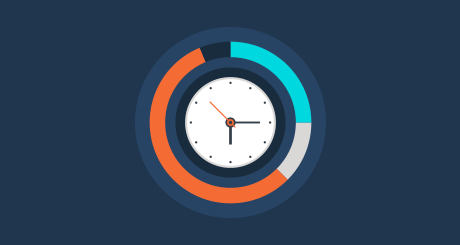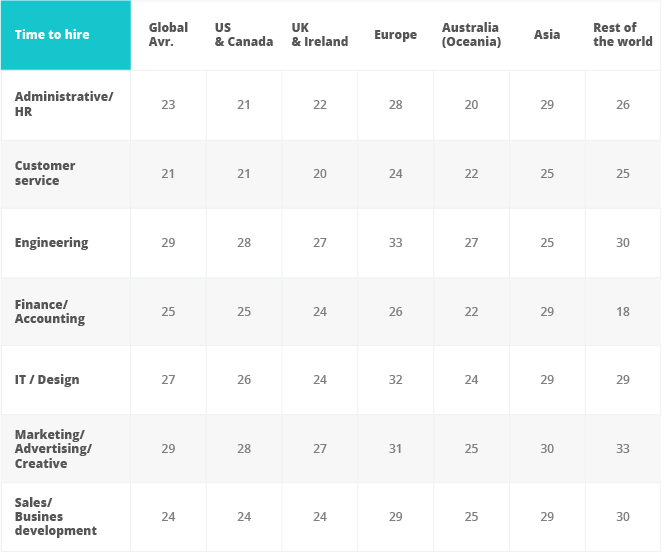Average time to hire: key recruiting metrics to track
The most important recruiting metrics include time to hire, which measures the duration from engaging a candidate to accepting an offer, and time to fill, which tracks the period from job posting to hiring. Other key metrics include hiring velocity, qualified candidates per hire, and interviews per hire.

Using recruiting metrics effectively is about finding the signal in the noise. Hiring managers, business owners and recruiters need data that delivers actionable insights.
The proper role of recruiting metrics is to answer useful questions about your business. While superficially similar to time to fill, time to hire starts the clock ticking once you’ve already engaged with the candidate, so it tells you something different about your hiring process and recruiting team.
Contents
What is time to hire?
Time to hire is the time elapsed between engaging a candidate and then accepting an offer. By tracking this metric, you can answer questions like:
- How long does it take you to spot that you have the right candidate?
- How fast do you move when you find the right person?
- Where are the bottlenecks in your hiring process?
Looking for better reporting analytics? Workable’s reports will refine your recruiting process. Sign up for our 15-day free trial.
Time to hire vs. time to fill
If the main function of time to fill is to inform realistic business planning, then the time to hire metric is about tracking the speed with which good candidates move through your hiring process once they’ve already been sourced or have applied. See how quickly your hiring team are making decisions and look at time to hire for an understanding of how quickly you spot the right candidate when they arrive in your hiring pipeline.
Hiring is a complex activity with too many external factors, from the labor market, to location, to seasonality, for a simple read. But time to hire is the efficiency metric, the one that gives senior management the clearest picture of how the recruiting team is performing.
Time to hire is measured from sourcing until their offer is accepted, not when they start their position, because there are a number of complicating factors. These may include obligations to a former employer, to personal commitments that are often beyond the recruiting team’s control. It’s measured from sourced/applied to the acceptance of the offer.
Should you need additional reporting based on start dates, custom reports can be built using your raw recruiting data in Workable and can be integrated with your preferred business intelligence tool.
More: FAQs about time-to-fill and time-to-hire
What is the average time to hire?

While they can be useful, don’t put excessive weight on benchmarks based on industry averages. Our data at Workable has shown us wide variances by role in most industries, where differences in the labor market can cause lags in closing candidates.
How to improve time to hire:
If your average time to hire is completely out of touch with industry benchmarks or other businesses in your location, here are some things you should consider for reducing time to hire:
- Track hiring velocity. This metric shows how much time you spend in each step of your recruitment process. With this information, you’ll identify areas for improvement. For example:
- If your sourcing is working well but candidates are getting stuck in the screening call stage it may be time to add to your recruiting team or divert resources from elsewhere.
- If there’s a slowdown in the interview stage look at how you’re managing interview scheduling.
- Break down the time to hire metric by job or department. If there’s an obvious lag in one team or on one role, talk to your hiring manager to find out why. Stress to them the importance of quick decision-making.
- Invest in an Applicant Tracking System. Instead of manually calculating time to hire, opt for an ATS that tracks recruiting metrics automatically. With detailed reports in your hands, spot quickly where your hiring process is less efficient and work on fixes. If you’re using Workable as your recruiting software, you can view time to hire reports organized per job or department, for your preferred time frames, or for the entirety of your organization. These reports are easy to share with your team and compare with industry benchmarks and will help you hire faster and better over time.
What are the recruiting metrics that matter?
- Time to fill: The planning metric
- Qualified candidates per hire: The sourcing metric
- Interviews per hire: The process metric
- Use the right recruitment KPIs to get more signal and less noise. Read our recruiting metrics FAQ.
Frequently asked questions
- What is the formula for time to hire?
- The time-to-hire for your first, second, and third open positions can give you a good idea of how long it will take to hire someone new. Simply divide the total number of hires by 3 (in this case), which gives an average amount that each position requires when divided into its own categories like department or location.
- What is the difference between time to hire and time to fill?
- The time to fill measure shows the gap between deciding to open up new roles and hiring someone for them. Time to hire takes into account the time it takes to fill an open position.
- What is a good time to fill rate?
- The average time to fill a job requisition is 41 days. This number can be used as an indicator of how efficient your recruiting process has been, and should help you improve on efficiency in future hires.



